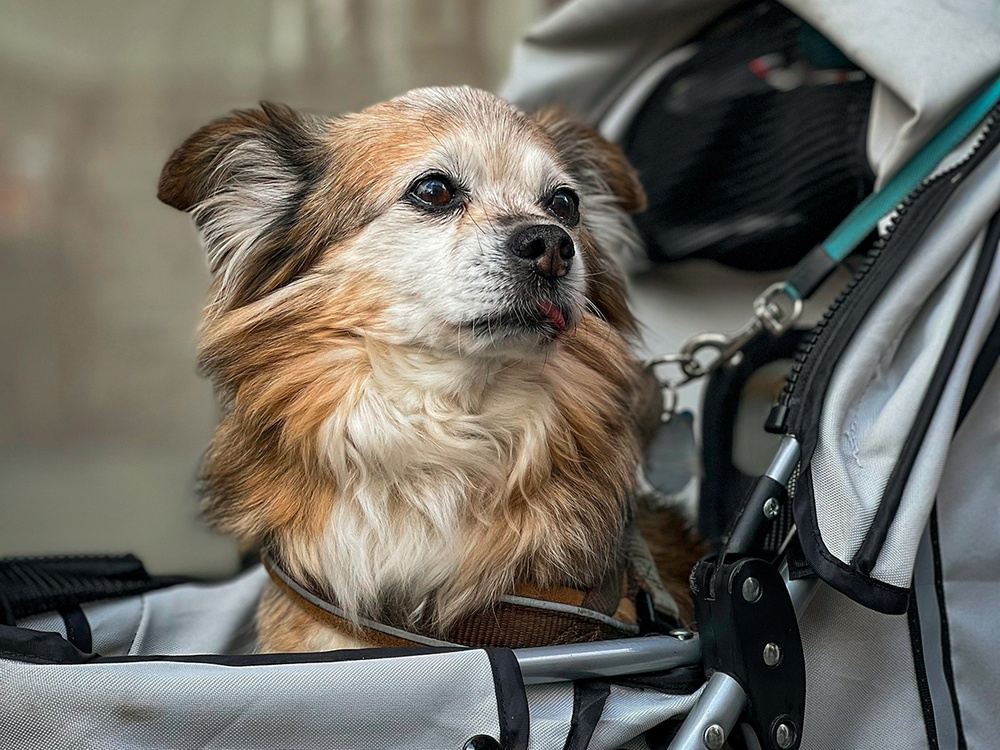How To Prepare For An Emergency Vet Visit
Most pet parents don’t like to think about the possibility of needing emergency veterinary hospital services. The truth is that one in three pets will need emergency veterinary care every year.
Preparing now for an emergency vet visit rather than winging it in the moment will save you precious time and give you peace of mind. As a proactive pet parent, there are ways that you can help make a trip to the pet emergency room less stressful for you and your beloved pet.
Choose Your Emergency Vet Now
Now is the time to take a lazy afternoon and choose which emergency clinic you would visit when you need their help. Look for an emergency veterinary hospital located close to your home as time can be precious when your pet is in need.
In a critical situation, the best pet ER clinic is the closest one. Pets whose symptoms may not seem critical at the moment can be exacerbated by the stress of a long car ride. A pet's condition can deteriorate over the extended time of a long drive.
Narrow your options to clinics with a good reputation by asking your primary veterinarian for recommendations. Many general practice veterinarians have insider information on local emergency clinics. They will be happy to offer advice on their preferred options.
Save the address and contact information of your chosen pet emergency room in your phone to prevent wasted time and energy searching for your options in the middle of an emergency. You want to focus on getting your pet the care they need as quickly as possible, not waste time looking up directions.
Prepare Financially
Unexpected medical emergency costs can cause stress on your budget as well as your heart. You can resolve some of that stress by starting a pet health savings account and regularly adding to it, or, better yet, opting into pet insurance.
Most emergency pet hospitals can’t offer payment plans. But don’t let that stop you from utilizing their care when your pet needs it. If you are on a tight budget, be open about your financial limitations. The staff will collaborate with you to find a treatment plan that works for your pet and your budget.
Outside lines of credit are also available, with CareCredit being the most popular, trusted line of credit for medical bills.
Keep Pet Medical Records
Pet emergencies often happen outside of your primary veterinarian’s hours when you won’t have access to your pet’s medical records, unless you already have copies at home. Knowing your pet’s medical history is critical in accurately diagnosing emergency issues.
Without background health information, the emergency veterinary staff will likely need to run additional tests to get a more in-depth understanding of your pet’s health. This may need to happen regardless, but if you have recent tests on hand, it can help the emergency veterinarian immensely.
Save precious time and prevent additional costs by keeping accurate medical records for your pets. Start by calling your primary veterinarian and ask them to send you a copy of your pet's medical records and prescription information.
Store this information together in a folder where you can easily access it in an emergency (not forgotten in the back of a desk drawer). Consider keeping a diary or videos of any abnormal behaviors or episodes like seizures or collapse if it is safe to do so.
You can even download a pet medical record app for your phone (like VitusVet or PawPrint) so that you always have your pet’s information on you.
Note all the medications your pet needs, including dosing information. If your pet’s medication changes often, you can also bring their medicine bottles to the pet ER. The labels have all of the information needed.
Either way, your emergency vet staff must know of any and all medications your pet is currently on to prevent interactions with treatment options.
Once you have comprehensive medical records, you can share them with any pet sitters or caregivers to have on hand in case they can't contact you during an emergency.
Don’t Give Meds Without Direct Guidance
While well-intentioned, giving your pet medication without the direction of a veterinarian can be a lethal mistake. Many medications that are helpful to humans are toxic to pets. For example, acetaminophen is an effective pain reducer for humans, but can cause liver failure in dogs at inappropriate doses.
Even if not toxic, giving medication to your pet can have a dire impact on their treatment options. A single aspirin can inhibit blood clotting for up to a week in some pets. Something that would be a major concern if your pet needs surgery.
If you have given your pet any over-the-counter medications, be sure to tell the veterinary staff when and how much was given.
It is also important to note that inducing vomiting at home with hydrogen peroxide is not recommended. Veterinarians have much safer forms of medications available.
Call The Pet ER
Some situations are obviously pet emergencies, while others may not be so clear. Our pets can’t advocate for themselves or tell us when something is wrong. Your intuition as a pet parent is a valuable insight that you shouldn't ignore.
As soon as you find yourself wondering if you should seek the care of a pet hospital, that is the time to call them.
When you call your emergency veterinary clinic, you can describe what’s going on with your pet and a trained professional will help you determine the best next steps.
Especially if you are unsure if you’re experiencing a pet emergency or not, the trained professionals can help guide you in deciding if your pet needs to be seen immediately or if you can wait to see your primary veterinarian.
If you know your pet needs emergency care, calling ahead is absolutely in your pet’s best interest. In cases of life-threatening accidents or illnesses, a professional may be able to guide you in first aid over the phone.
Simply calling the pet ER to notify them that you are on the way can give them a chance to prepare for your specific pet and situation, saving precious minutes.
If you’re concerned your pet may have ingested a toxin, you can call ASPCA Poison Control (888-426-4435) or the Pet Poison Helpline (855-764-7661). They can offer poison-specific treatment guidance and advise if a trip to the emergency vet is needed.
Add their numbers to your phone now so they are easily available in case of a possible poisoning emergency when minutes matter most.
What Information Will The Emergency Vet Need?
The information you give to the emergency veterinarian staff is critical in their ability to provide accurate and swift care. Every detail you share could be the one that helps the emergency staff on the path to a correct diagnosis.
You will likely be asked similar questions repeatedly as the staff works to rule out different conditions. Be patient, you may remember something relevant when asked a second time or in a different way.
If you have time, make note of the following information:
- Is this the first time this issue has happened or is there a history?
- What symptoms specifically is your pet experiencing?
- When did you first notice symptoms?
- Does your pet have any previous issues that may be connected?
- Are your pet’s vaccines and preventative care all up to date?
It’s important to answer the veterinary staff’s questions honestly. They will not judge you if you sneak human food to your dog under the table or if your cat got into something that’s not quite legal. They truly only want to care for your pet. Giving them the full and honest truth is the only way they can help efficiently.
What To Expect At The Vet ER
When you arrive you will likely be met with a technician to do a quick exam of your pet. They will ask you questions to gather basic information on your pet’s condition and determine how urgently care is needed. They may take your pet’s temperature, check gum color, heart rate, and examine any injuries.
Emergency pet hospitals are often busy and triage patients not by first-come-first-serve basis but in order of the most life-threatening cases. If your pet is in critical condition, they will be prioritized over other patients. If your pet is stable, they will likely need to wait for further diagnostics and treatment.
While waiting for care for your sick or injured pet is incredibly stressful (and will likely take hours), keep in mind that waiting is a good thing. It means your pet is more likely to be okay. The pets that get to ‘skip the line’ are fighting for their lives.
When it’s your pet’s turn to be seen you may or may not be able to join them for diagnostics depending on the policies of the clinic. You will likely be asked about clinical signs and health history again. The veterinarian will go over diagnostic information with you and discuss treatment plan options before moving forward.
Once you agree on treatment plans, the staff may perform further diagnostic tests or start treatments. They will keep you updated on all progress as they receive information.
If your pet needs overnight treatment they will likely receive an IV for fluids and medications. The staff will do their best to keep your pet as comfortable as possible and will be monitored closely throughout treatment.
Keep your phone charged and your volume turned up for when the veterinarian calls with updates or questions. Answer unknown numbers, many clinics have multiple phone lines used by different departments. Keep a phone charger handy if your phone tends to lose battery power.
Focus And Stay Calm
During an emergency, it is important to remain as calm as possible and focus on safety. Staying calm will help calm your pet. Keeping your pet as calm as possible can prevent further injuries during transport.
Much of your time at the pet ER will be spent waiting. Find a way to calm your nerves as getting frustrated will only delay care for your and other pets. Have compassion for others waiting in the lobby with you. They too are afraid, worried, and stressed.
Your pet is in the best place they can be while experiencing a health emergency. Trust in the staff and the process. Remember that you, and the emergency care team, are doing everything possible to give the best care to your furry family member.
This is a very stressful situation for you and your pet, but the emergency veterinary staff are accustomed to saving pets’ lives every day.
Follow Up with Your Primary Veterinarian
Once your primary veterinarian’s office is open, call to let them know what’s going on with your pet. They may want to schedule a follow-up appointment or be a part of a continued care plan if needed.
Ideally, the pet ER can provide your primary veterinarian with medical records of the visit, but you can also request the medical records yourself. Either way, it’s important to confirm your primary veterinarian is in the loop and even go over your pet’s issue, diagnosis, and treatment plan.
Know You Are Prepared
The emergency care staff is accustomed to meeting pets and pet parents on some of their worst days, but often pet parents are simply not prepared. Having an idea of what to expect and preparing ahead of time can streamline your pet’s care and calm your worries.
Fact checked by Veterinarian

Dr. Paula Simons is an Emergency and Critical Care veterinary resident on her way to becoming a veterinary criticalist. She is originally from Philadelphia, Pennsylvania, and completed her veterinary training in Ontario, Canada, at Ontario Veterinary College. Dr. Paula Simons has a particular interest in critical care nutrition, trauma, and pain management. She enjoys the management of surgical patients and troubleshooting complex cases. Additionally, she is a huge advocate for her patients and ensuring their comfort. She has two cats named Moo and Kal, whom she loves dearly. More About Us












